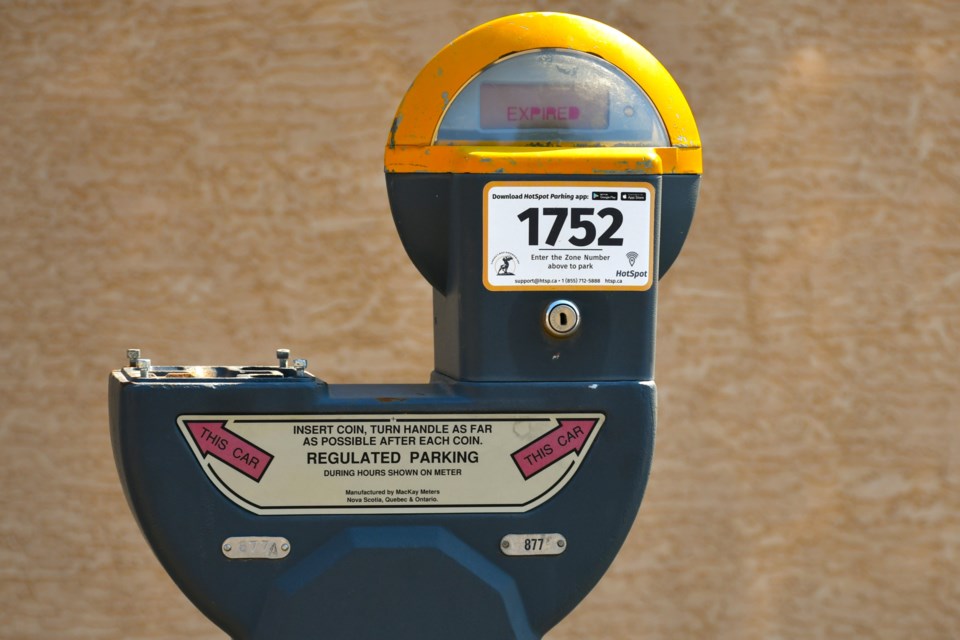MOOSE JAW — Parking meter revenues were down nearly $34,000 in the second quarter compared to last year, likely because thieves have vandalized or stolen one-third of parking meter heads in the city.
City administration presented a report during the Aug. 25 regular city council meeting about every department’s second-quarter activities. Included in the document was information about the amount of revenue the municipality has collected from parking.
The data showed that the city generated $117,956.66 in parking revenues between April and June, including $96,017.86 from coins and $21,938.80 from the Hot Spot app. In comparison, in Q2 2024, those numbers were, respectively, $151,727.51, $130,952.45 and $20,775.09.
Therefore, city hall received $33,770.85 less in revenue from parking meters year over year.
Meanwhile, year-to-date, the city has collected $241,492.54 in revenue compared to $295,679.24 last year, a decline of $54,186.70 or roughly 18 per cent.
The report noted that as of June 30, there were 292 unusable parking meters throughout Moose Jaw, which accounted for roughly 31.5 per cent of all metered heads. The reason for this decline is that people had “vandalized, damaged or stolen” the infrastructure.
Coun. Heather Eby pointed out this issue during the meeting, saying “we all know what is happening” — vandalism — and that it was “annoying.”
“But for some reason, the city as the organization … is getting the bad rap because people are vandalizing (the infrastructure),” she said, noting the municipality is doing its best to figure out a solution, and until then, there will be plenty of free parking downtown.
“I think it’s very important for people to realize that we are very aware of this and we are trying to figure out a solution,” Eby added. “It’s just not as easy as everyone might think.”
Streets and roads
The report noted that during Q2, the city used 445.21 tonnes of asphalt for repairs, made 29 excavation repairs, used 51 tonnes of recycled asphalt, repaired 1,583 potholes, repaired four dips, repaired 25 manholes and repaired or replaced 135 regulatory signs.
In comparison, in Q2 2024, the city used 484.7 tonnes of asphalt for repairs, made 36 excavation repairs, did not use any recycled asphalt because the machine hadn’t arrived, repaired 1,045 potholes, repaired one dip and repaired two manholes, while information about sign replacement was unavailable.
Furthermore, in Q2 2025, the city painted 45 crosswalks and 7,669 metres of lane lines, while it graded 49,610 metres of gravel roads and 9,215 metres of back lanes.
In comparison, in Q2 2024, the city painted 12 crosswalks and 6,393 metres of lane lines, while it graded 6,786 metres of gravel roads and 3,856 metres of back lanes.
The next regular council meeting is Monday, Sept. 8.




